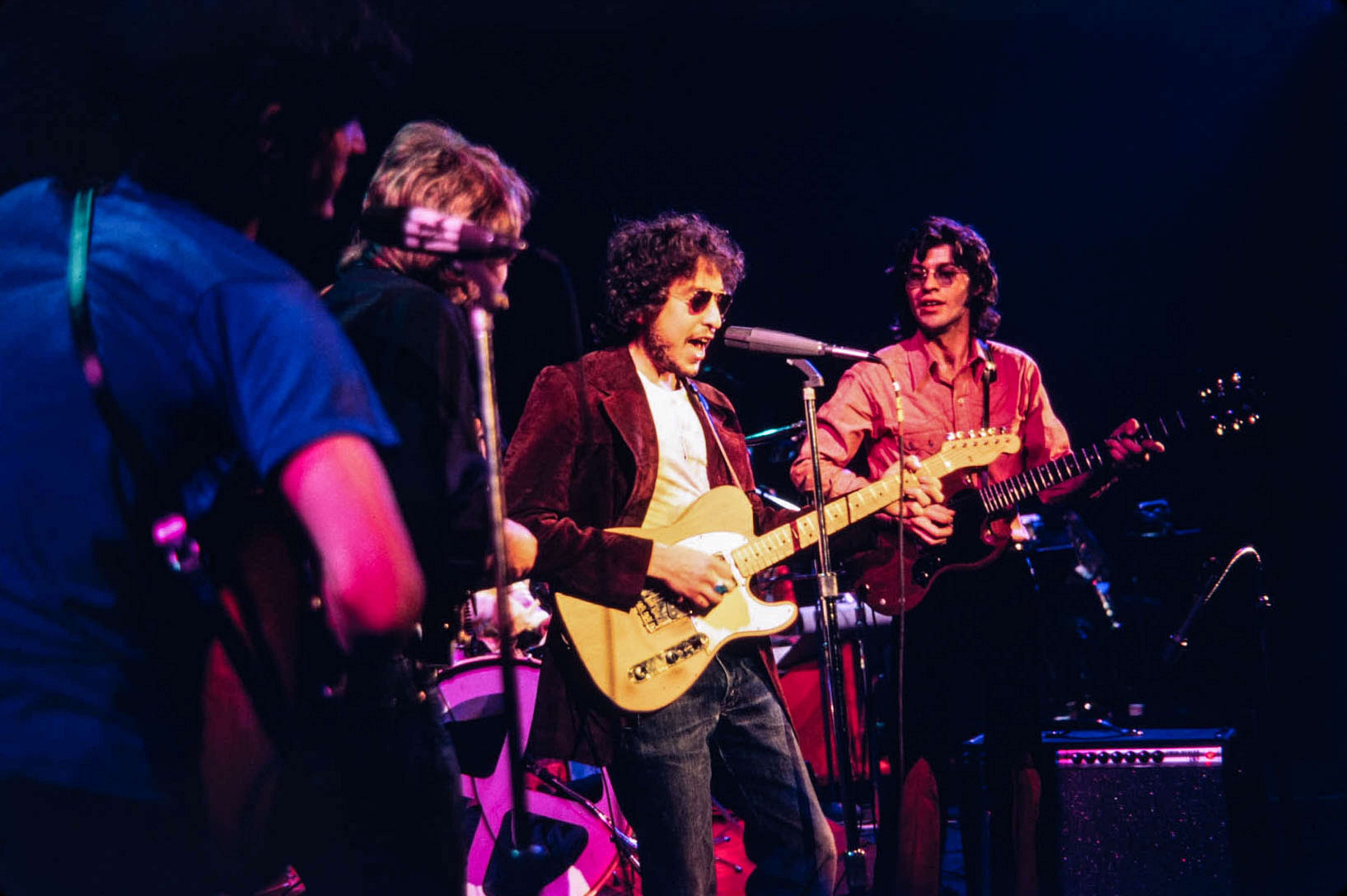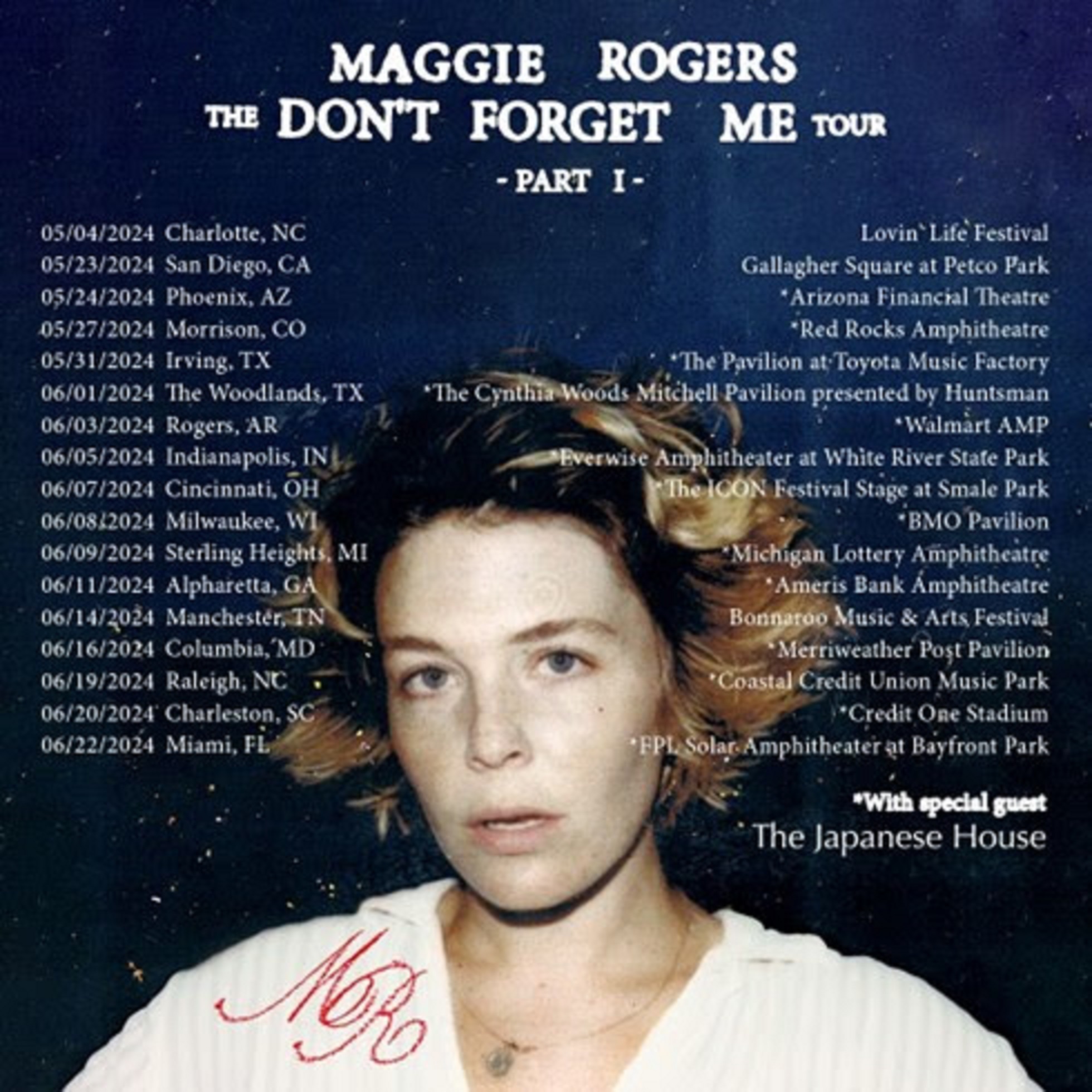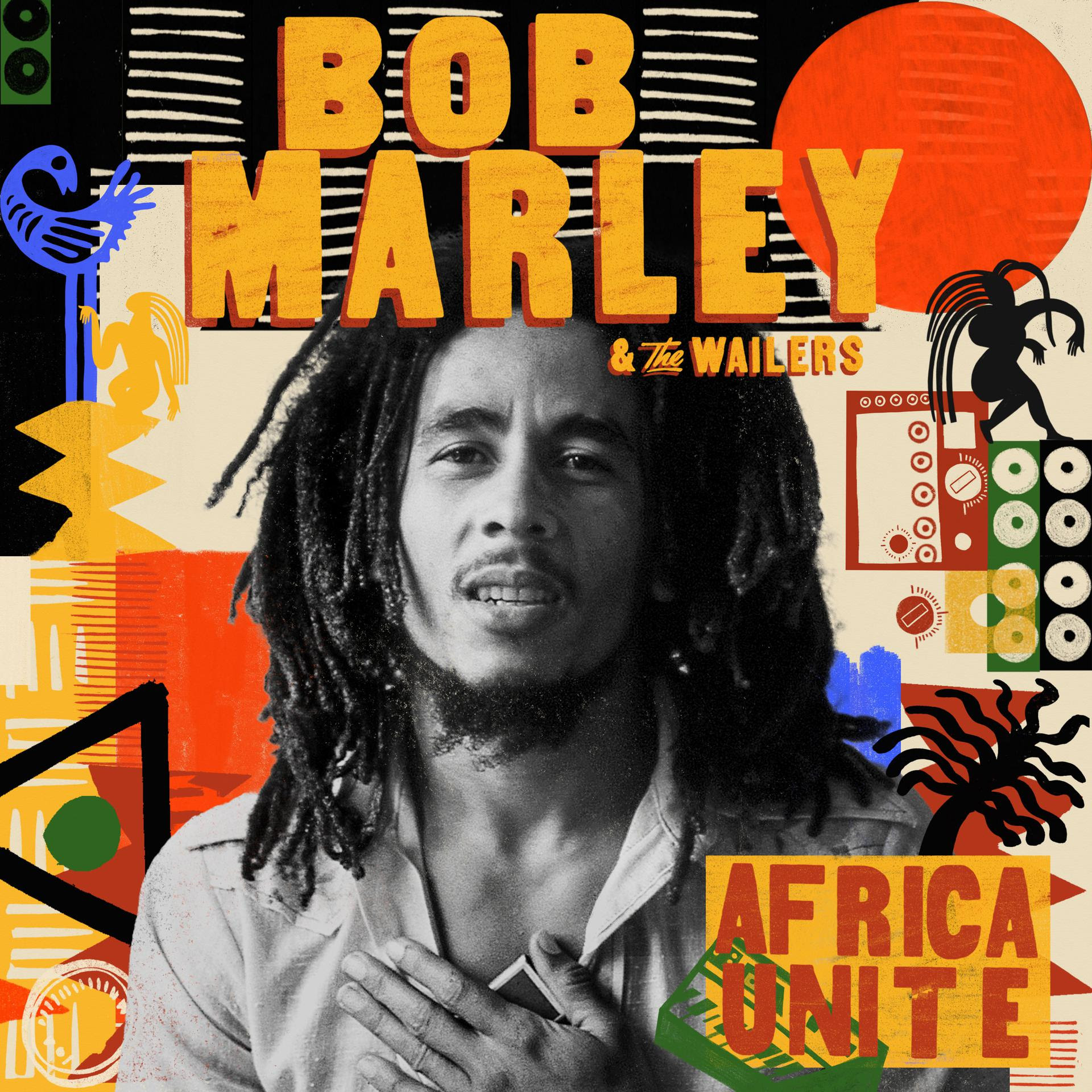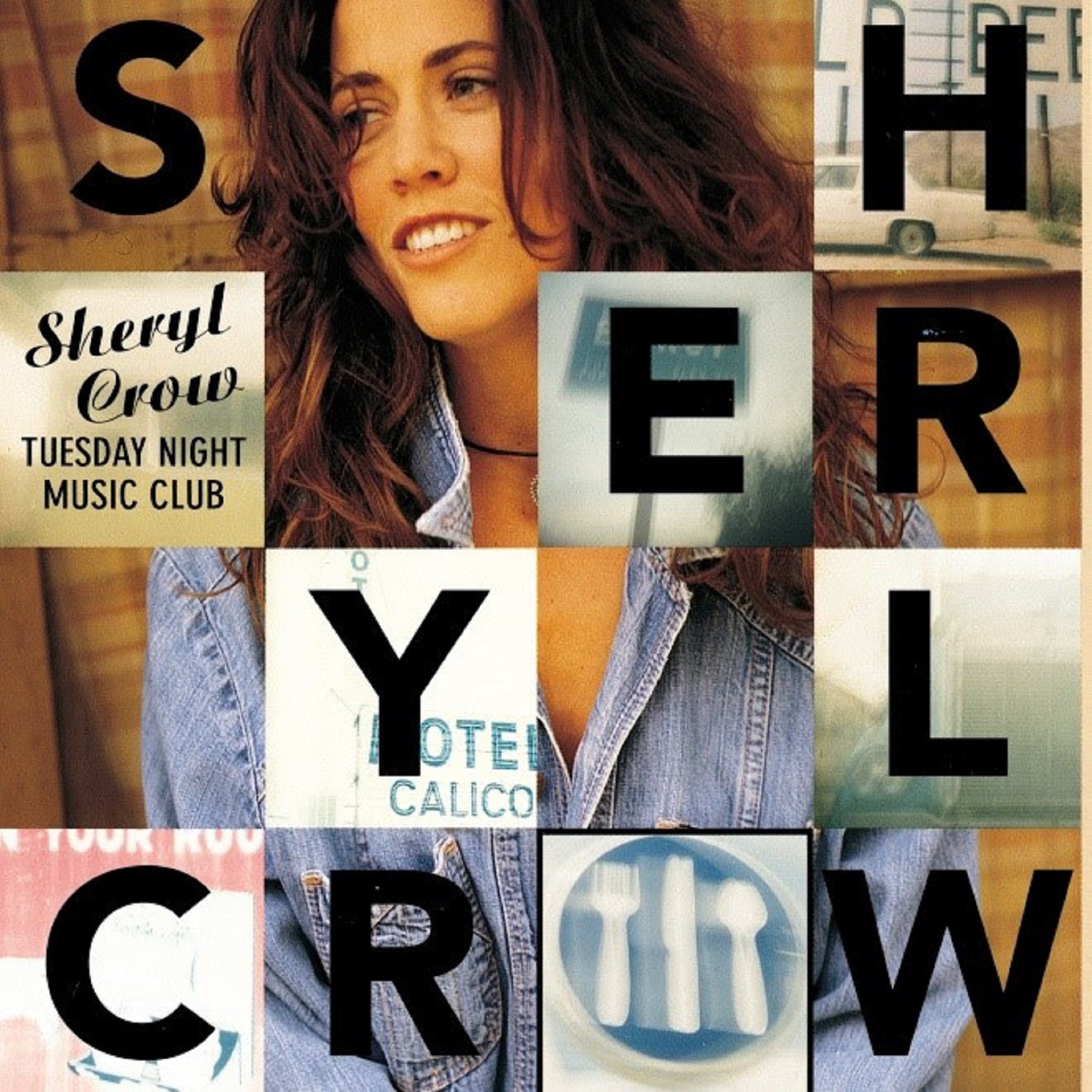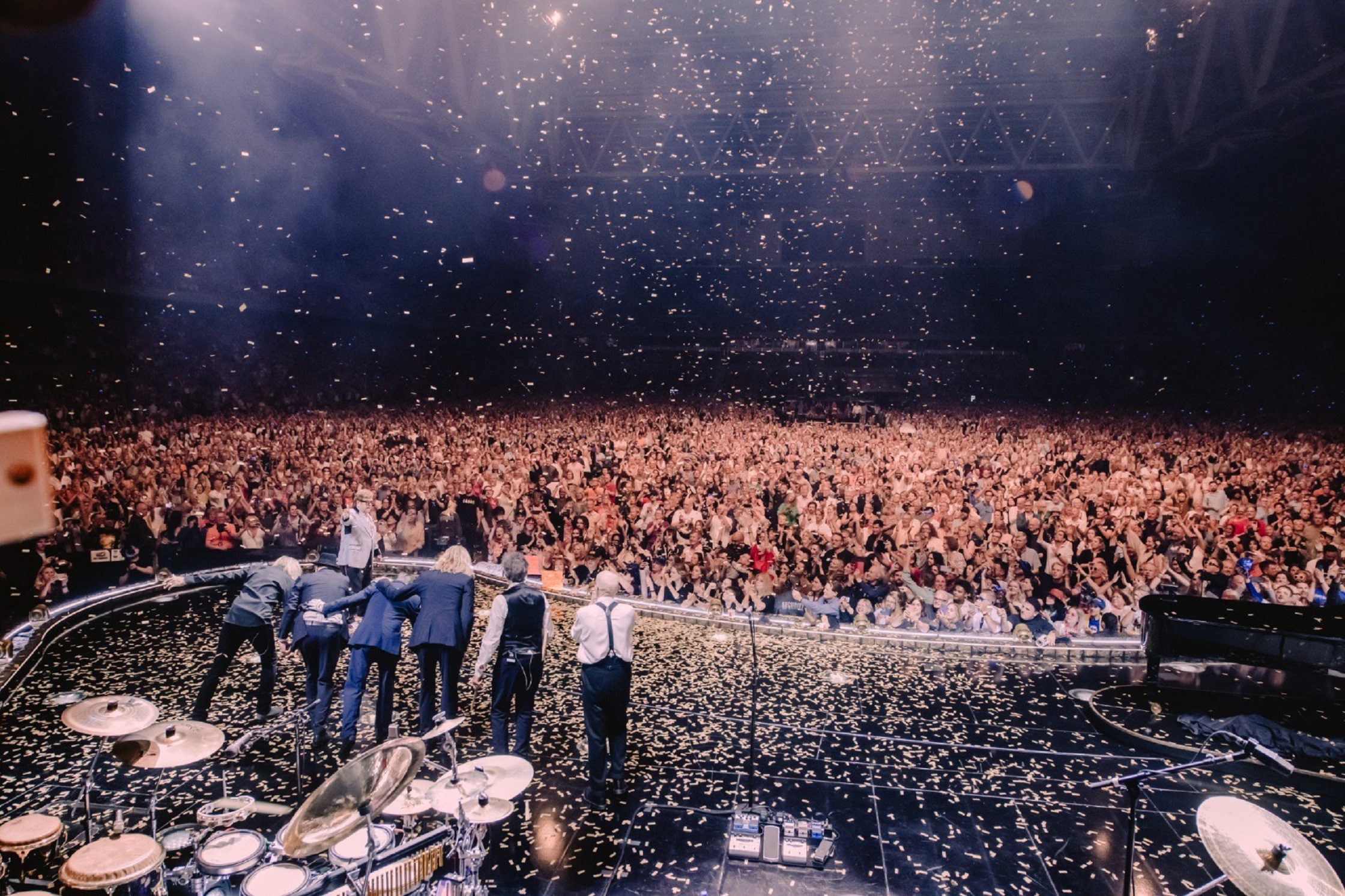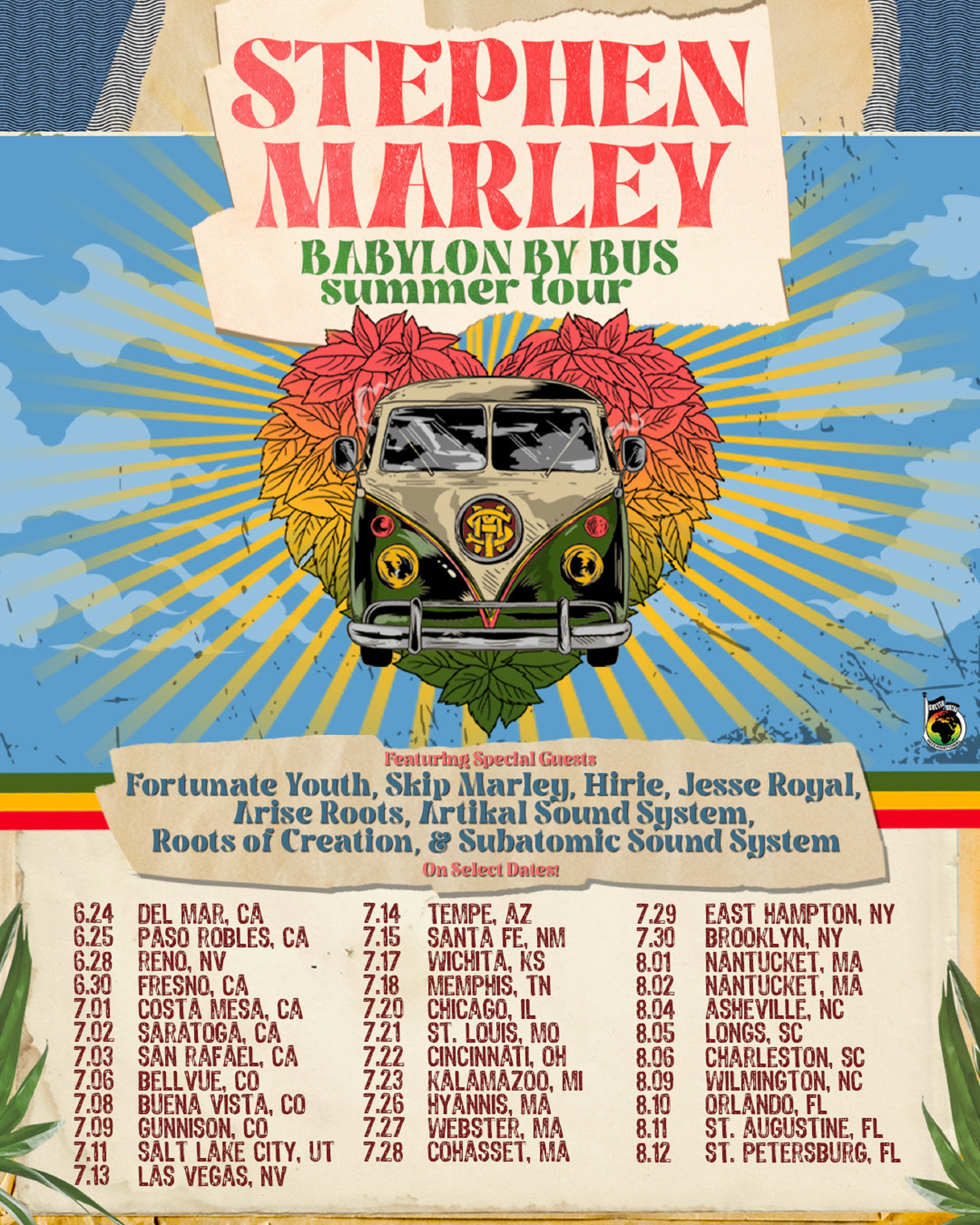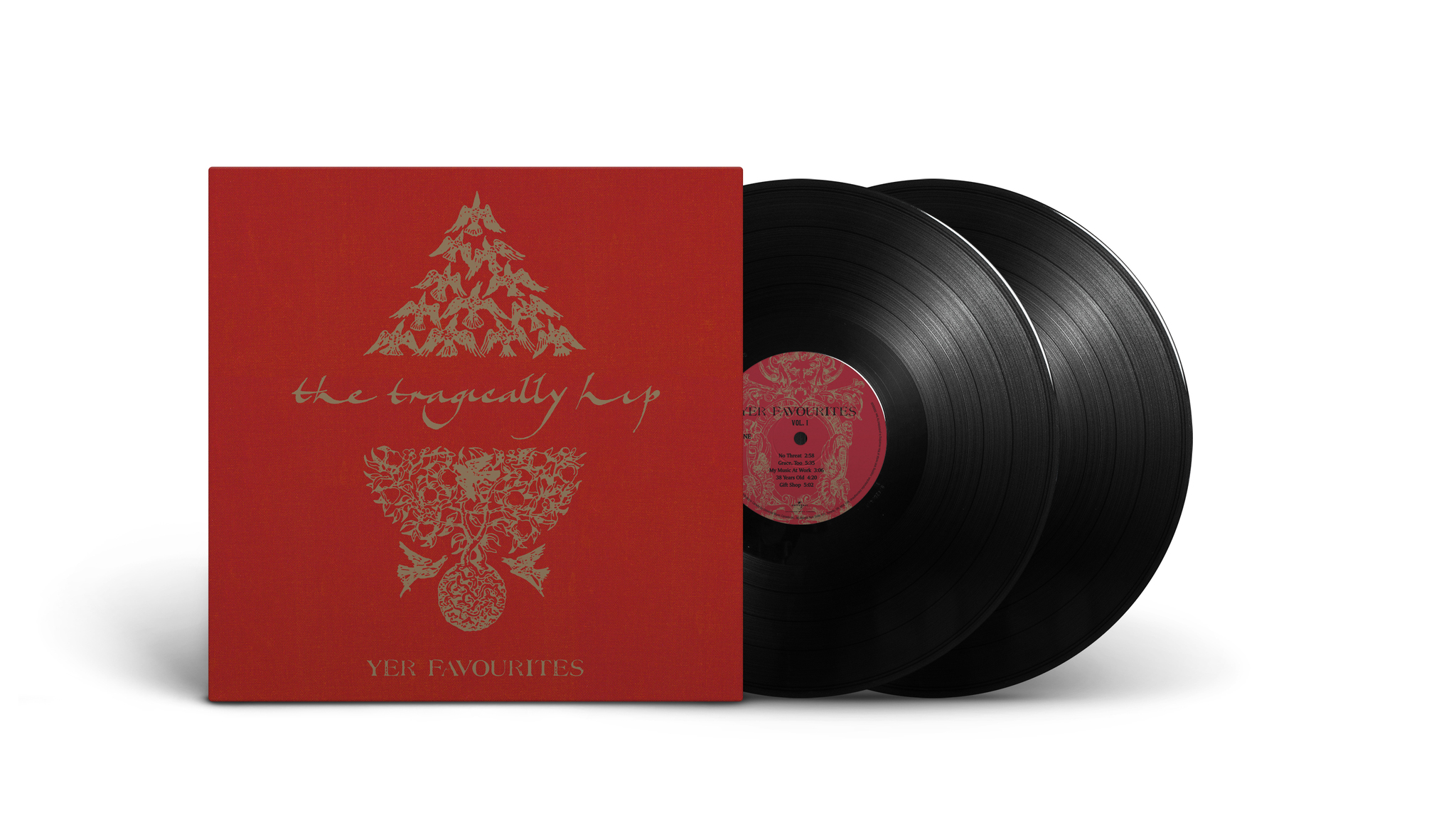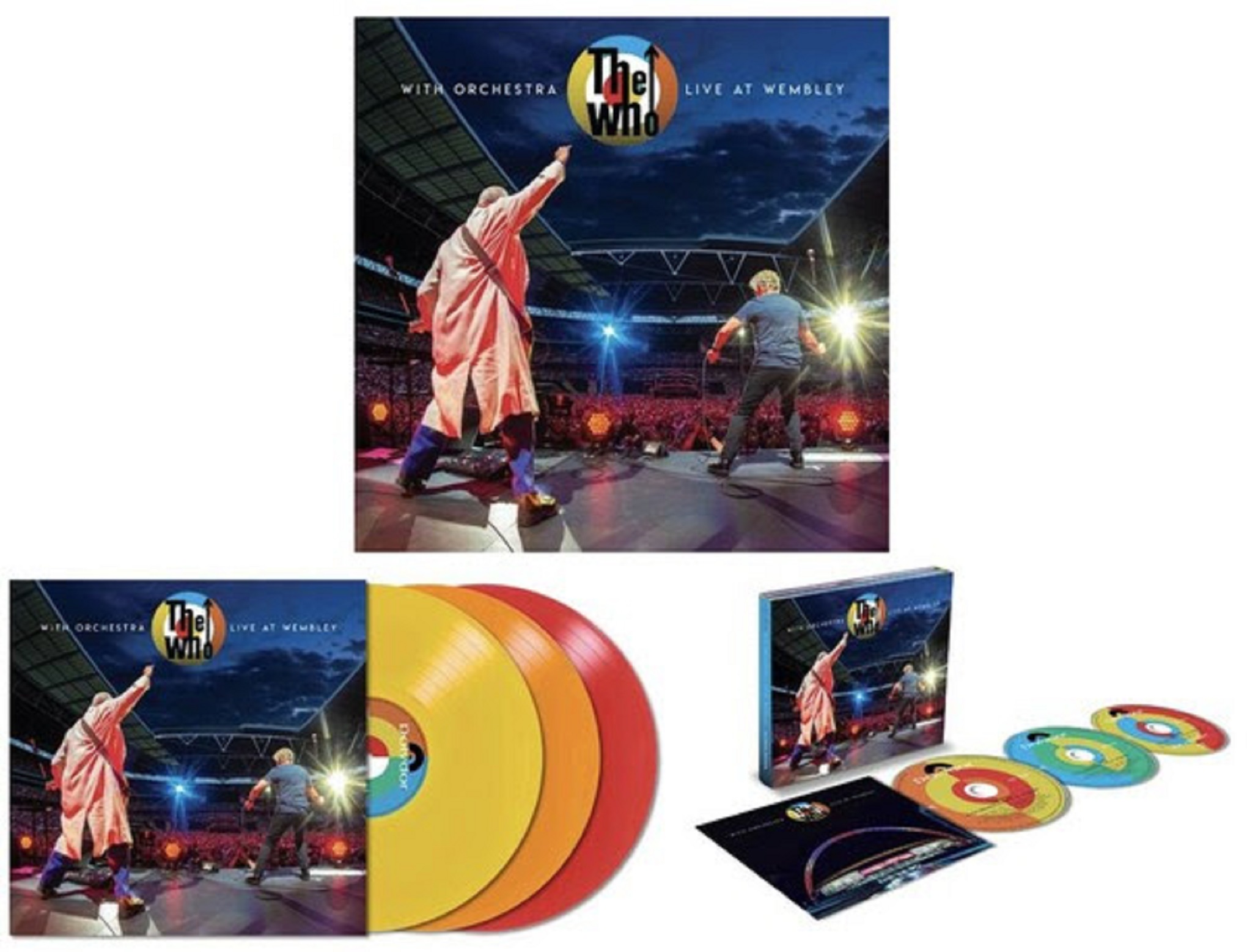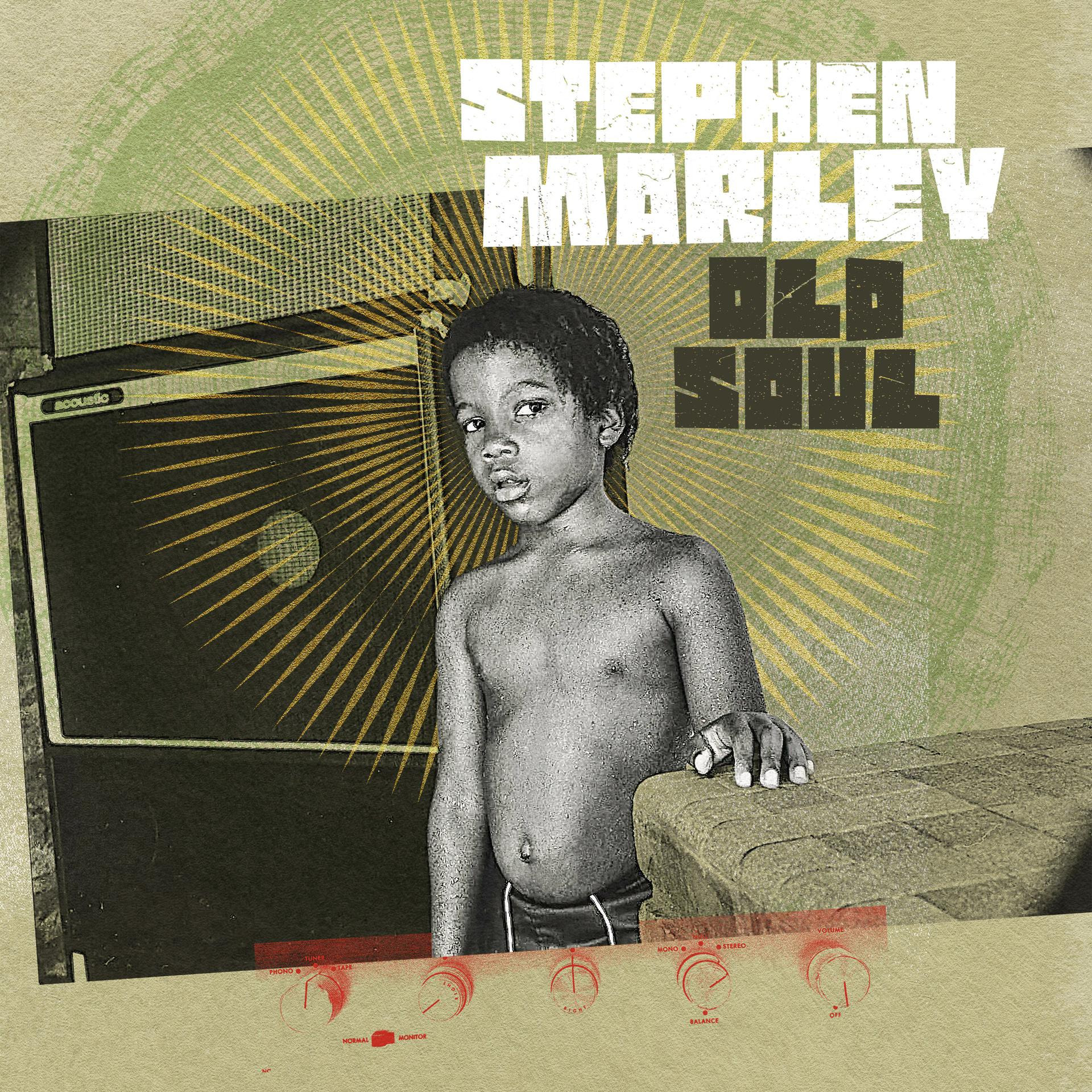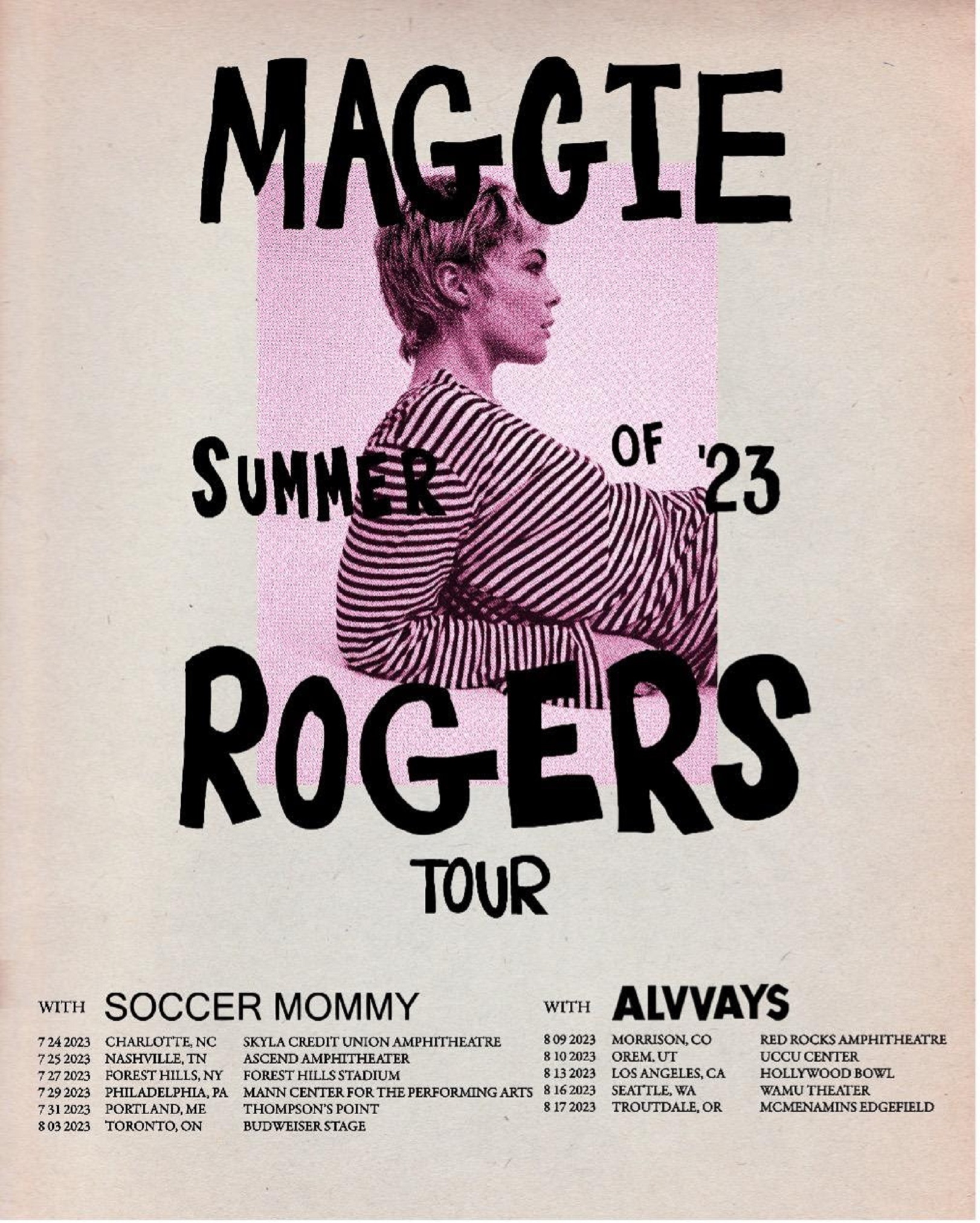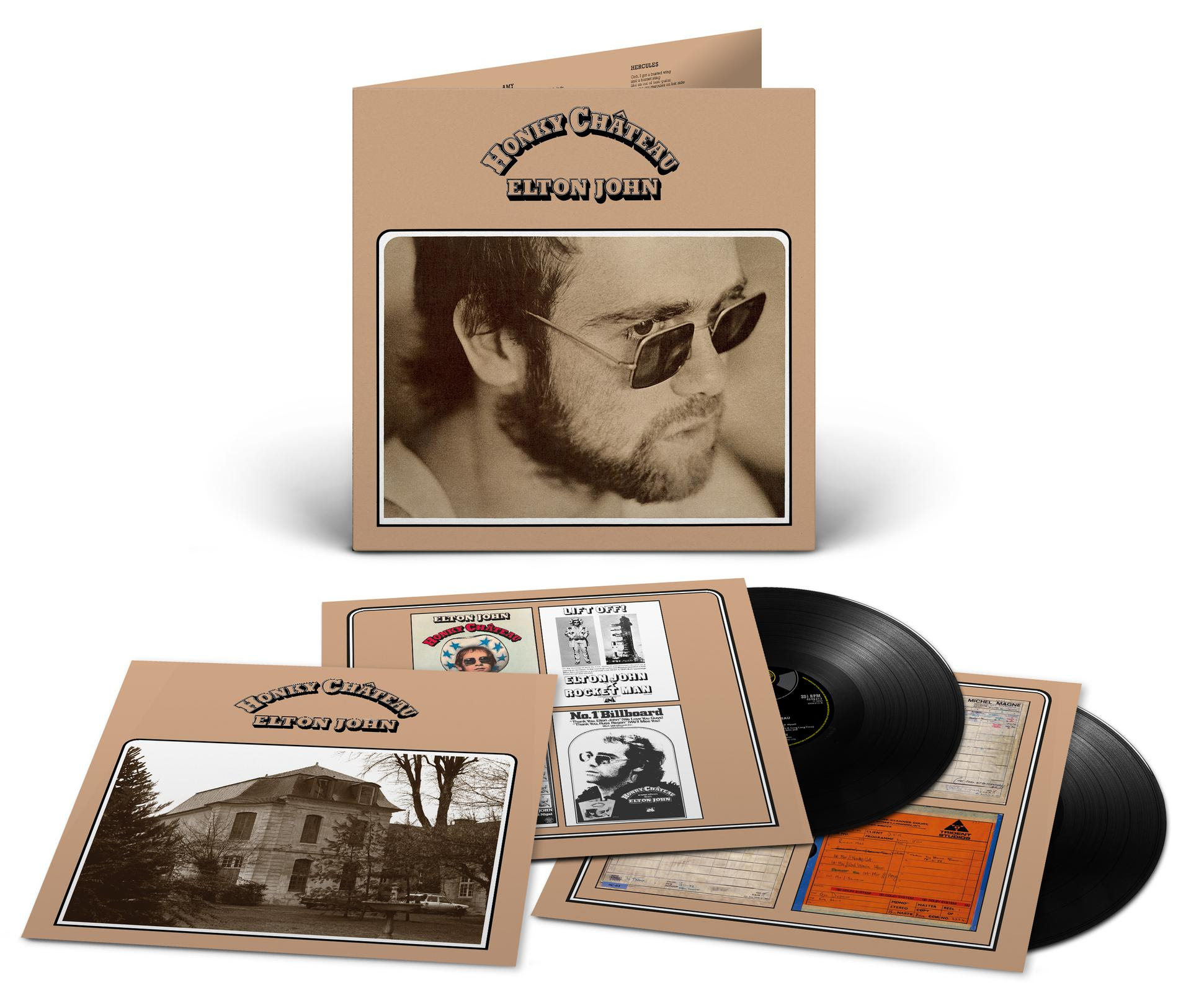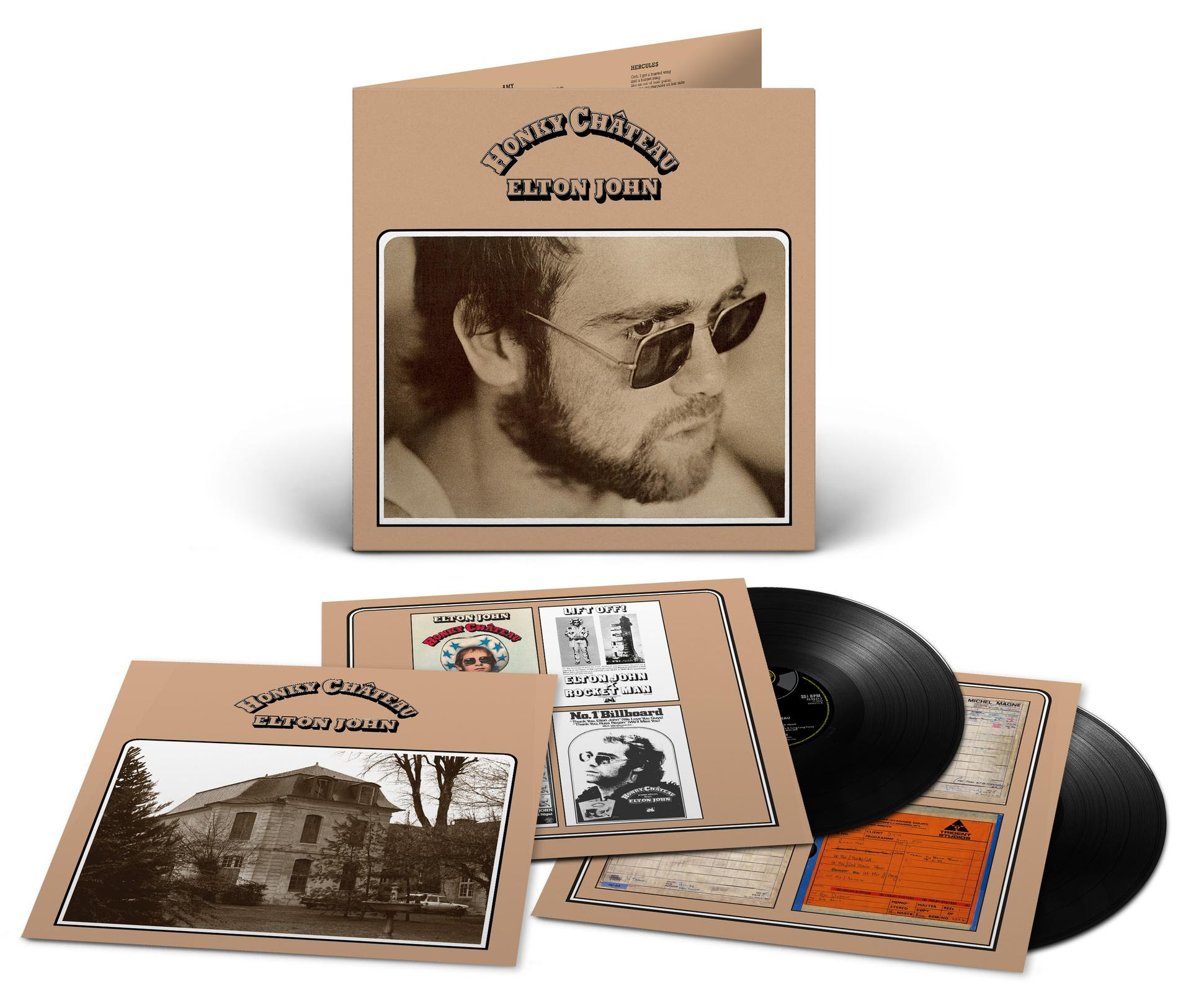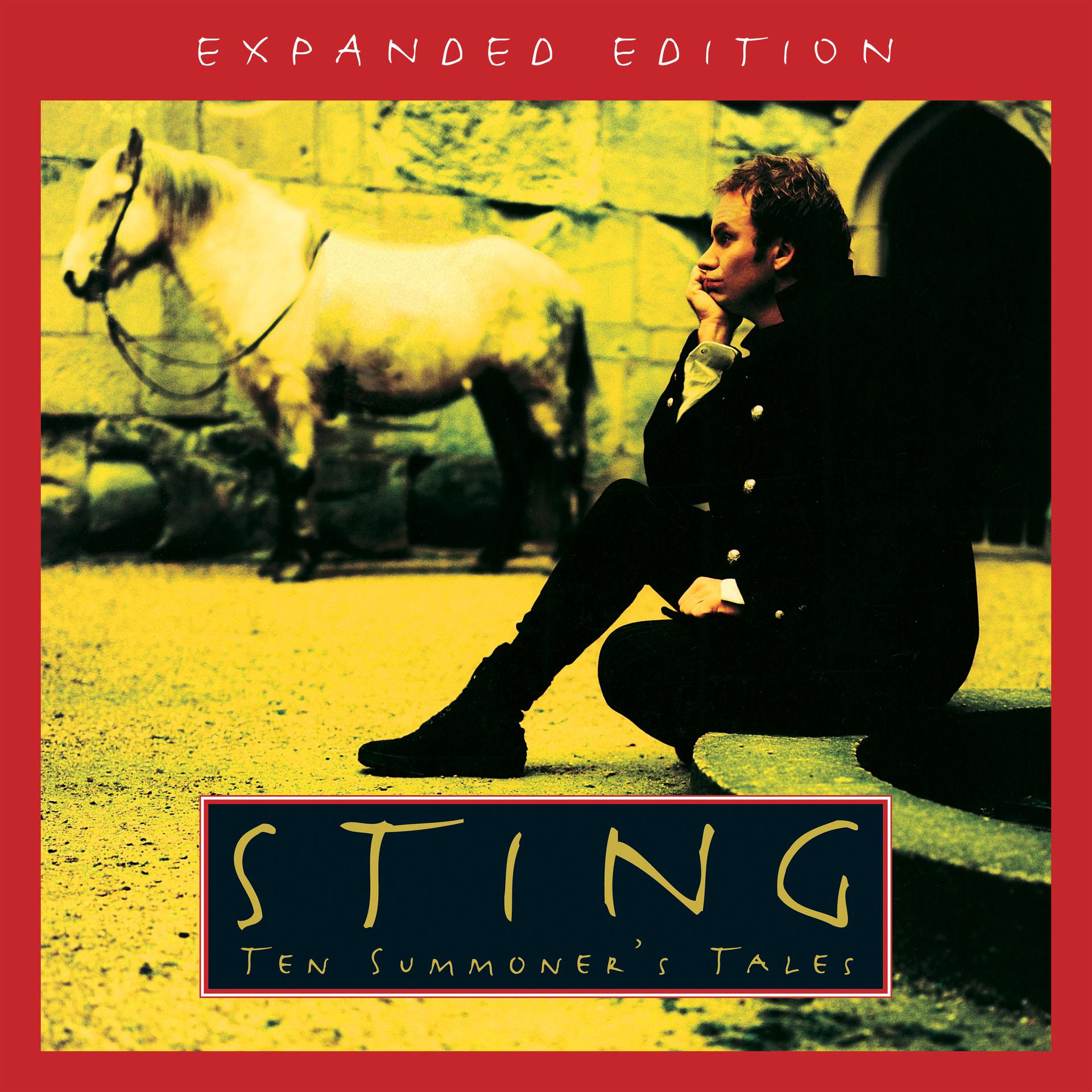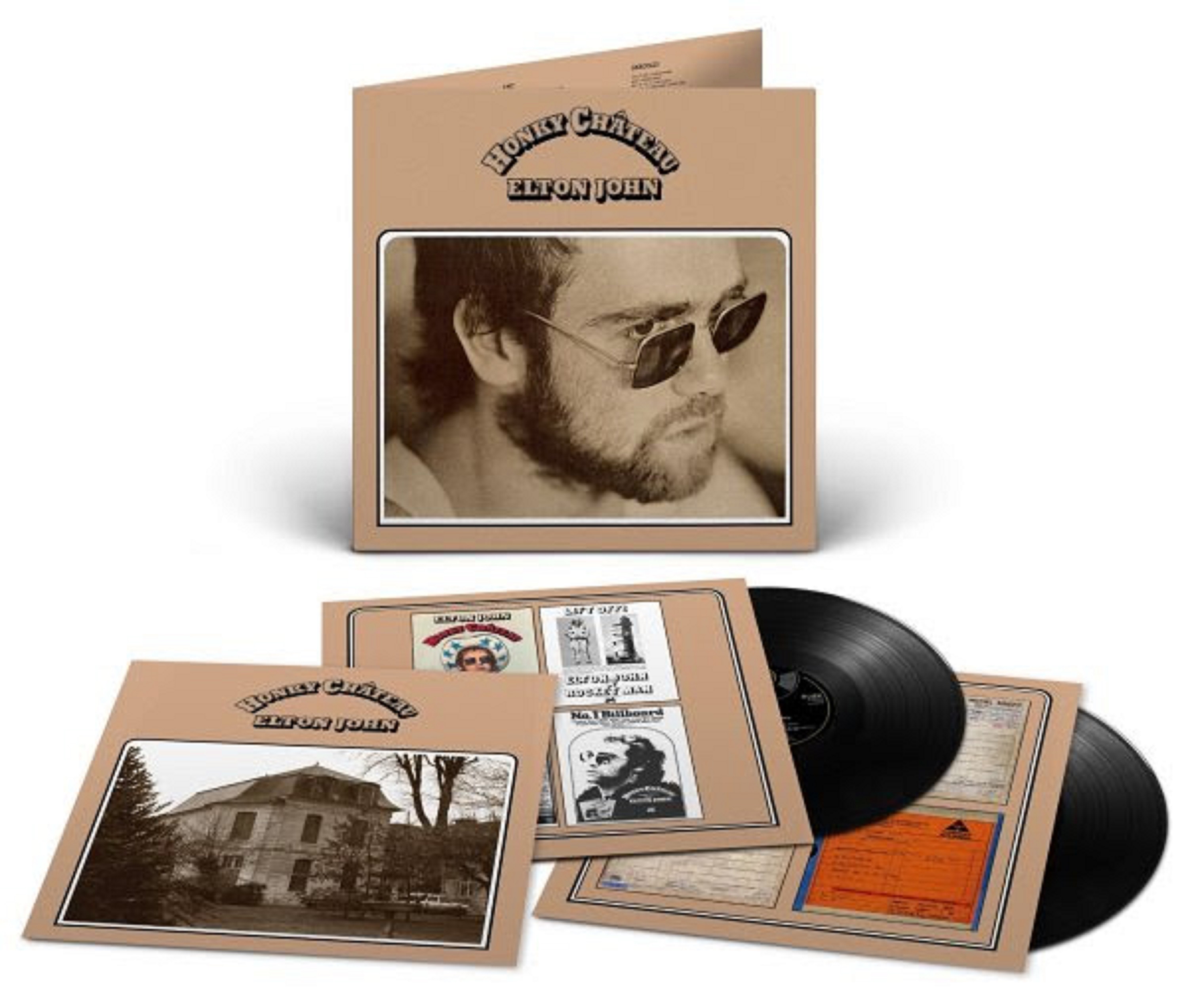In celebration of the 50th anniversary of The Band’s seminal live album, Rock Of Ages, a series of never-before-seen photos taken by celebrated and influential photographer, Ernst Haas, of the legendary four-night stand at the Academy of Music in New York City during the final week of 1971, have been made available to view for the first time. The beautifully shot color photos, from one of the pioneers of color photography, vividly capture the group of Rick Danko, Levon Helm, Garth Hudson, Richard Manuel, and Robbie Robertson in their prime on New Year’s Eve, 1971, joined by special guest Bob Dylan, who helped usher in the new year by performing with his longtime friends who once backed him as The Hawks when he went “electric” in 1965. Several of Haas’ photos were included in the Rock Of Ages album, released fifty years ago this week on August 15th, 1972, and additional shots were featured in the 2013 release, Live At The Academy Of Music 1971, an expansive box set that added a soundboard recording of the entire New Year’s Eve performance to newly mixed versions of the Rock Of Ages tracks. View the previously unreleased photos exclusively at UDiscover Music here: https://www.udiscovermusic.com/stories/the-band-bob-dylan-ernst-haas-1971-feature
Robbie Robertson said, “Bob Cato, The Band’s long standing album designer brought Ernst Haas to my attention. He spoke of Ernst as having a special gift with his use of color. He was the first single-artist show of color photography at New York’s Museum Of Modern Art. It would be unusual for Ernst to photograph a live concert but he agreed to shoot the Rock Of Ages shows. His pictures have depth and vibrate to the music and off the page. We were grateful and honored that Ernst Haas helped capture this event for The Band.”
Alex and Victoria Haas of The Ernst Haas Estate said, “We are thrilled about the rediscovery of these iconic photographs and are excited to share them with the world.”
In addition to the concert photos, several performance videos from the December 30th, 1971 show filmed by Howard Alk and Murray Lerner have been newly upscaled and are now available on YouTube for the first time along with a newly created lyric video for “The W.S. Walcott Medicine Show” from the same show. The revitalized performances allow fans to experience the concert like never before and include “Don’t Do It,” a cover of Marvin Gaye’s “Baby Don’t You Do It,” written by Holland-Dozier-Holland, the Motown songwriting and production team of Brian and Eddie Holland and the late Lamont Dozier who passed away last week, and The Band’s classics, “King Harvest (Has Surely Come)” and “The W.S. Walcott Medicine Show.” The former video was originally released on the 2005 anthology, The Band: A Musical History, while the latter two were released on the DVD included in the Live At The Academy Of Music 1971 box set. Writing in that album’s liner notes, Robertson provided some insight into the footage: “Filmmakers Howard Alk and Murray Lerner shot a few songs of the concert on the 30th. It was just an experiment, because to do a full shoot at the Academy you had to set it up with the Unions. I think some Union guys even showed up and threatened to destroy our equipment and break cameras if it wasn’t organized through them.”
Watch the videos here: bit.ly/ROAVideos
Additionally, Rock Of Ages’ golden anniversary is being marked with a new line of merch including t-shirts, buttons, keychains and a poster. Check out the new collection here: https://www.officialtheband.com/dept/rock-of-ages
The Band arrived at New York’s Academy Of Music in the final week of December 1971 energized following an incredibly successful European tour that exceeded all expectations, especially considering the combative reception they received when backing a plugged-in Bob Dylan on his infamous 1966 electric tour. Having recently released their latest album Cahoots a few months earlier, their fourth LP in as many years, beginning with 1968’s game changing masterpiece, Music From Big Pink, and following with 1969’s self-titled opus and 1970’s bestselling, Stage Fright, The Band were firing on all cylinders and sought to document it. As Robertson recounts, “We hit a stride for playing well in our live performances, but more importantly: a pure pleasure of appreciating what each of us was doing. I thought we should capture this on tape, maybe even for a record.”
For the four-night stand, The Band enlisted legendary New Orleans songwriter, producer and arranger Allen Toussaint to write horn arrangements for several songs, following their fruitful collaboration on Cahoots album opener, “Life Is A Carnival.” When Toussaint arrived in New York, he was dejected as someone had stolen his horn charts at the airport leaving him to start from scratch just days before rehearsals. Somehow, despite the setback and coming down with an ear infection, he was able to get the charts done in the eleventh hour. Horn player Howard Johnson (baritone sax, tuba, euphonium) and the band’s longtime friend and producer John Simon helped pull together a handful of crackerjack horn players for the festivities, which included Snooky Young (trumpet, flugelhorn), Joe Farrell (tenor sax, soprano sax, English horn), Earl McIntye (trombone) and J.D. Parron (alto sax, e flat clarinet). A remote recording van with 16-track tape machines was booked and Phil Ramone confirmed to engineer.
The Band played four remarkable concerts consisting of two sets a night; the first featuring The Band by themselves and the second set with the five-piece horn section. Each night was better than the next as The Band, Toussaint and the horn section gelled and Garth, Levon, Rick, Richard and Robbie showed off the breadth of what they could do and their remarkable catalog, including such standouts as “Up On Cripple Creek,” “Stage Fright,” “The Weight,” “King Harvest (Has Surely Come),” “The Night They Drove Old Dixie Down,” “Across The Great Divide,” “The Shape I’m In” and some inspired covers like Marvin Gaye’s “Don’t Do It” and Chuck Willis’ “(I Don’t Want To) Hang Up My Rock And Roll Shoes.” The shows culminated early into the first hours of the newly ushered in year of 1972 with a special appearance by Bob Dylan who reunited with The Band for a four-song encore that climaxed with an exuberant performance of “Like A Rolling Stone.”
Writing about the shows, Robertson reflected, “Garth’s improvisation had no limits. His sounds and technique, no one in the world could touch him. He was so completely unique. Rick showed something during this period that I still don’t understand. While singing like a bird, he played a fretless bass… in an unorthodox style that worked against reason and normality. Richard was “in the zone” singing and playing as good as ever. Totally in control and making us cry with that voice. Levon showed up with a musical force that the rest of us leaned on to make the magic happen. He sang and played his heart out every one of those shows, and nailed it every night. All this gave me the freedom to play anything that felt good, ‘fearless abandon’ might be what they call it, and it also allowed me to develop signals and interplay with the horn section for certain dynamics.”
Select highlights from the concerts were compiled for The Band’s classic 1972 double LP, Rock Of Ages, which peaked at No. 6 on the Billboard 200 and remains a core album in the trailblazing group’s storied Capitol Records catalog. In 2013, all four of the concerts multitrack recordings were revisited for Live At The Academy Of Music 1971, providing a deep diver into the pioneering group’s stage prowess.
Listen To Rock Of Ages: https://theband.lnk.to/RockOfAgesPR
Listen To Live At The Academy Of Music 1971: https://TheBand.lnk.to/Academy1971PR
Upon its release in 1972, Rock Of Ages was met with widespread acclaim from fans and the music press alike. Music critic Ralph Gleason raved in Rolling Stone’s full-page review, “From the beginning to the end of side four, the entire side simply cooks with a crackling, roaring, swinging energy that leaves you breathless at the end. Rock & roll is surely here to stay if the Band has anything to do with it. Everybody take a bow!” Fifty years on, the album remains a defining, beloved statement of the band’s catalog. “Rock of Ages belongs on any short list of the best live albums ever committed to tape, while serving as a coda to the group’s groundbreaking influence on musicians on both sides of the Atlantic,” exclaimed Best Classic Bands in their appreciation while Ultimate Classic Rock simply called it a “revelation.”
The Band would fittingly draw the curtain on their time together with another legendary live show, The Last Waltz, but it’s Rock Of Ages that captured them at the apex of their career.





